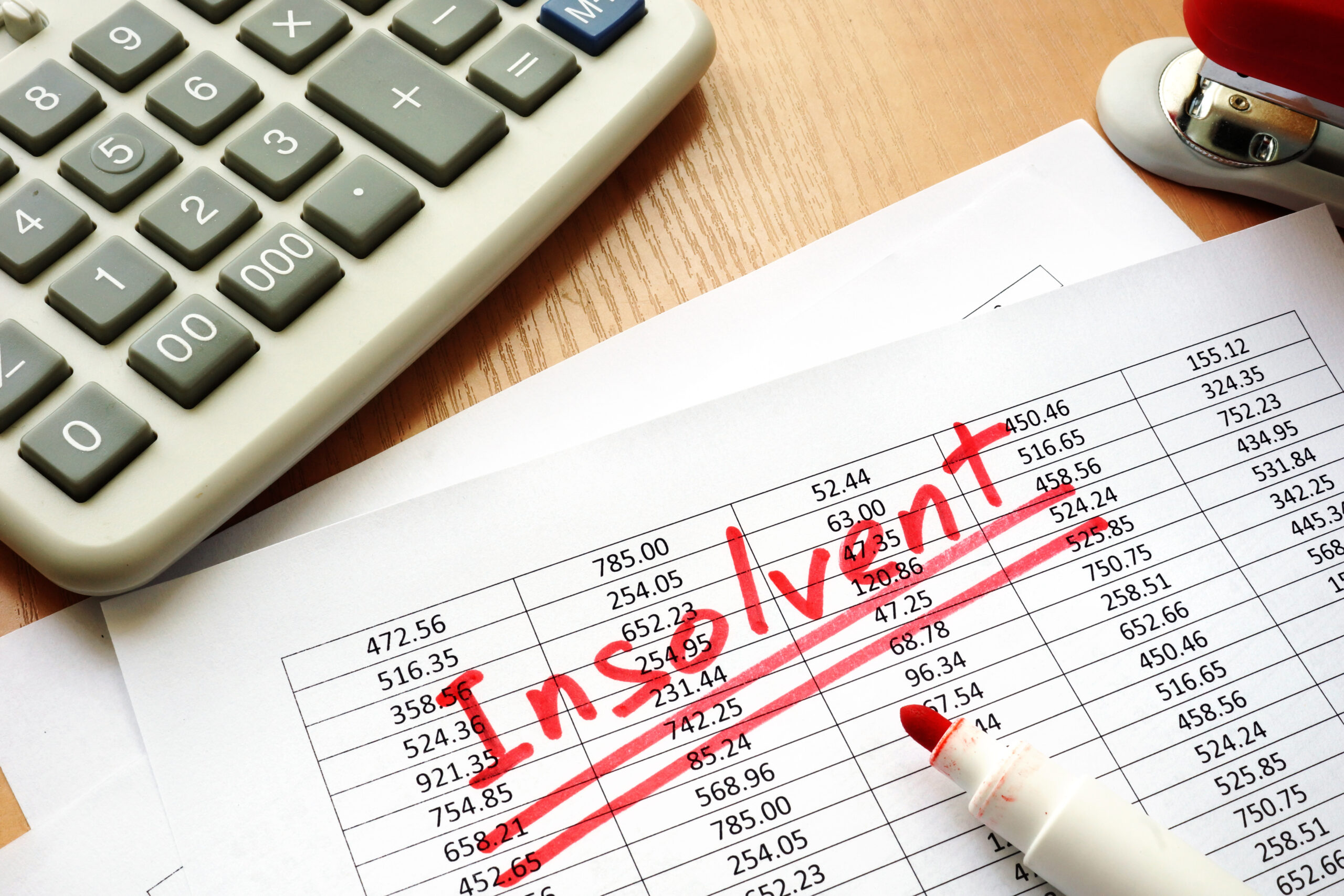Our Insolvency Practitioner Ideas
Our Insolvency Practitioner Ideas
Blog Article
Fascination About Insolvency Practitioner
Table of ContentsSome Known Questions About Insolvency Practitioner.Little Known Questions About Insolvency Practitioner.The Best Strategy To Use For Insolvency PractitionerAbout Insolvency PractitionerTop Guidelines Of Insolvency PractitionerInsolvency Practitioner Fundamentals ExplainedSome Known Facts About Insolvency Practitioner.
Bankruptcy is when responsibilities are above the worth of the business, or when a debtor can not pay the financial debts they owe. A firm can end up being insolvent as a result of a variety of scenarios that result in poor capital. When encountered with insolvency, a company or individual can call financial institutions straight and restructure debts to pay them off.
Service proprietors may call lenders directly and restructure financial debts into even more manageable installations. Financial institutions are typically amenable to this strategy because they want to be settled and avoid losses, even if the payment is on a postponed schedule.
The proprietor creates a proposition describing just how the financial obligation might be restructured making use of price reductions or other plans for support. The proposition reveals creditors exactly how the service might produce enough capital for successful operations while paying its financial obligations. Commonly, a forgiven financial obligation may be considered earnings by the Irs (IRS).
Not known Factual Statements About Insolvency Practitioner
When a business needs to pay boosted prices for goods and solutions, the firm passes along the expense to the customer. Instead of pay the raised price, several customers take their service somewhere else so they can pay less for a product and services. Shedding customers causes losing revenue for paying the business's financial institutions.
Business might wind up paying large quantities of cash in problems and be overcome operations. When operations cease, so does the company's income. Absence of income causes unsettled costs and financial institutions requesting cash owed to them. Some firms become insolvent due to the fact that their products or services don't evolve to fit consumers' altering requirements.
The Basic Principles Of Insolvency Practitioner
Expenditures exceed incomes and bills continue to be unpaid. Kinds of insolvency include cash-flow insolvency and balance-sheet insolvency. Cash-flow bankruptcy occurs when a business has the possessions to cover their debts but they are in the wrong kind, such as genuine estate rather than fluid funds. Balance-sheet bankruptcy, on the other hand, shows an absence of assets in any type of form to cover financial obligations.
The internal revenue service states that an individual is insolvent when the total liabilities exceed overall assets. Insolvency Practitioner. A bankruptcy, on the various other hand, is a real court order that illustrates just how a financially troubled individual or organization will settle their creditors, or exactly how they will certainly market their assets in order to make the repayments
About Insolvency Practitioner
If that circumstance expands longer than expected, it can cause insolvency. When a firm or individual is bankrupt, they can not satisfy their financial responsibilities. Solvency is when you have enough funds to cover the repayments you owe. A company is taken into consideration solvent when they have extra properties than responsibilities.

Comprehending the variables that can cause bankruptcy, such as overspending, can help you avoid insolvency and its consequences.
Insolvency Practitioner Can Be Fun For Everyone
It is popular that supervisors and police officers of firms (and managers of minimal liability firms) owe fiduciary duties to their companies and their shareholders (or members). These fiduciary obligations are defined by state laws and, though there are variations from state to state, they usually include an obligation of commitment and a duty of treatment.
The responsibility of care requires directors and officers to work out persistance, to make informed decisions, and to webpage act in excellent belief so that their actions remain in the best rate of interest of the firm. Past the scope of this discussion, some states enable these duties to be limited either by so noting in the organizational files or abiding with various other demands.
The 4-Minute Rule for Insolvency Practitioner

Beware about giving shareholders special therapy at the expense of check financial institutions (e.g., licensing and moneying a reward or a stock redemption). Be cautious regarding preferential therapy between courses of shareholders. Clear up efforts to find out all the facts before taking a specific strategy; directors must genuinely think that any type of decisions made are in the most effective rate of interests of the company in its entirety (i.e., decisions will certainly be evaluated in knowledge because of the effect of such actions on the firm).
In any kind of bankruptcy or insolvency case, repayments made to certain creditors at the expense of other lenders can be clawed back, especially if there is some connection in between the company and the creditor. Take into consideration proposing at an annual stockholder conference (or any other conference of stockholders) a resolution attesting that all previous organization choices and activities taken by the directors and officers of the company were absorbed good belief see this page after an exercise of practical treatment.
9 Simple Techniques For Insolvency Practitioner
Completely divulge any type of individual or organization relationships with celebrations on the other side of transactions entailing the company to stay clear of the look of a dispute of interest. In assessing prospective fund raising deals or a sale of properties of the struggling corporation, know that these deals may be scrutinized later on because of any subsequent growth of directors' fiduciary responsibilities to consist of lenders.
Report this page